
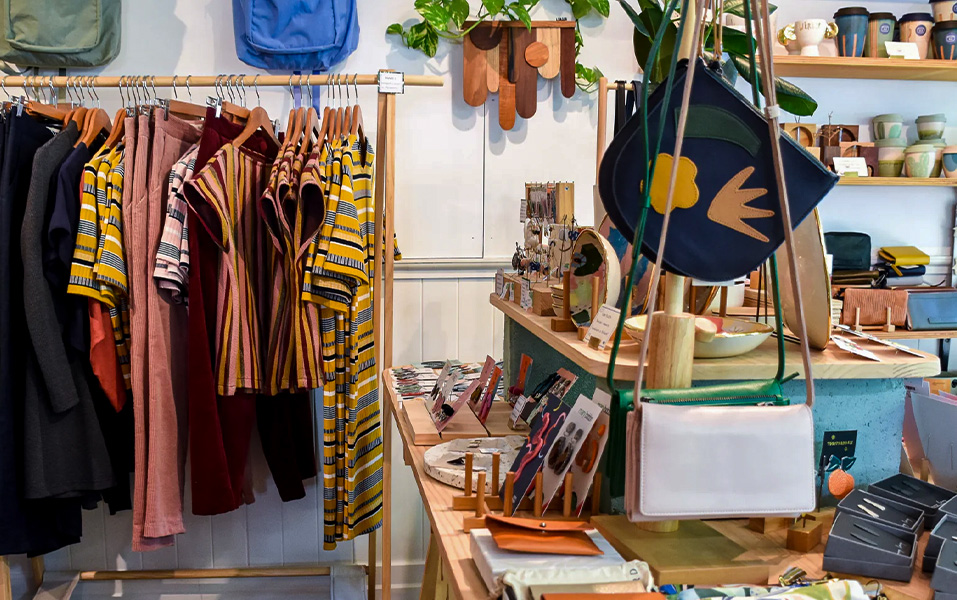
“If walls could talk, would your store display be saying something sustainable?”
Visual Merchandising is no longer just about catching the eye—it’s about catching hearts, minds, and yes, saving the planet too. The new-age shopper notices more than colors and lights; they look for meaning. In response, brands are swapping out old-school cardboard cutouts and plastic stands for eco-smart materials that tell powerful, planet-friendly stories.
From mushrooms that grow into display stands to fabrics made from banana plants, the material world in VM is getting a bold, green makeover. Let’s explore the coolest eco-materials taking over store windows and experience zones across the globe.
Mycelium, the root structure of fungi, is being used to create packaging, plinths, and modular displays. Lightweight, compostable, and strong enough for display design, Mycelium is grown in molds using agricultural waste, reducing environmental impact at every stage.
Famous Example: IKEA collaborated with Ecovative Design to explore Mycelium as a replacement for polystyrene packaging. Retailers have also used it for signage and product stands, giving their display not just structure but soul.

At JD Institute of Fashion Technology, students in the Visual Merchandising course learn the knowledge of how to design with unconventional, biodegradable materials, while also understanding their sourcing and production processes.
Made from Abaca banana plants, Bananatex is the world’s first durable, waterproof fabric made entirely from banana fibers. It’s strong yet flexible and ideal for banners, wall wraps, fabric panels, and soft VM structures.
Famous Example: QWSTION, a Swiss brand, uses Bananatex in bags and store installations to emphasize sustainability throughout the customer journey.
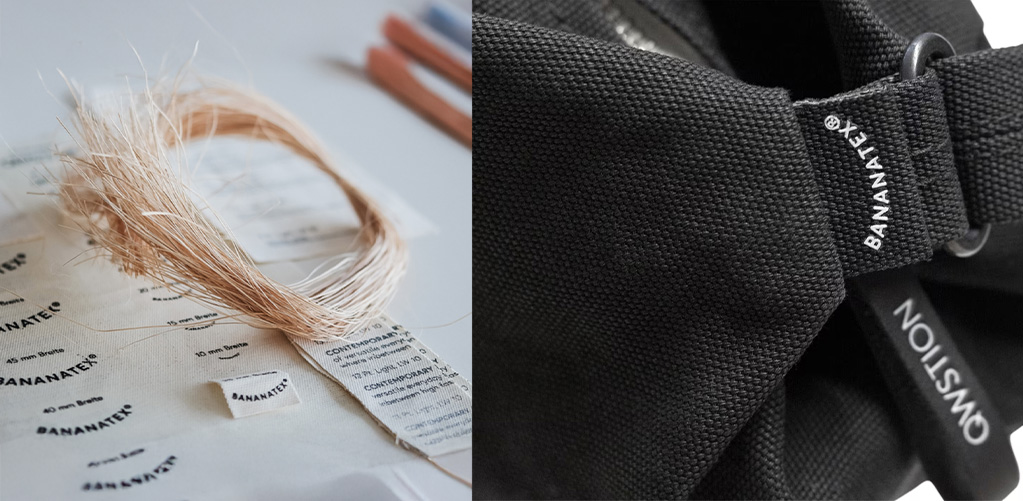
This material works beautifully in eco-luxe stores, lifestyle pop-ups, or fashion zones where texture, story, and sustainability need to blend effortlessly.
Instead of ending up in landfills or oceans, plastic waste is now being reborn as VM materials. Brands are using recycled plastics to craft modular panels, mannequins, display boxes, and even decorative installations.
Famous Example: Adidas partnered with Parley for the Oceans to use marine plastic waste in their in-store displays and exhibits—literally showing customers what impact can look like.
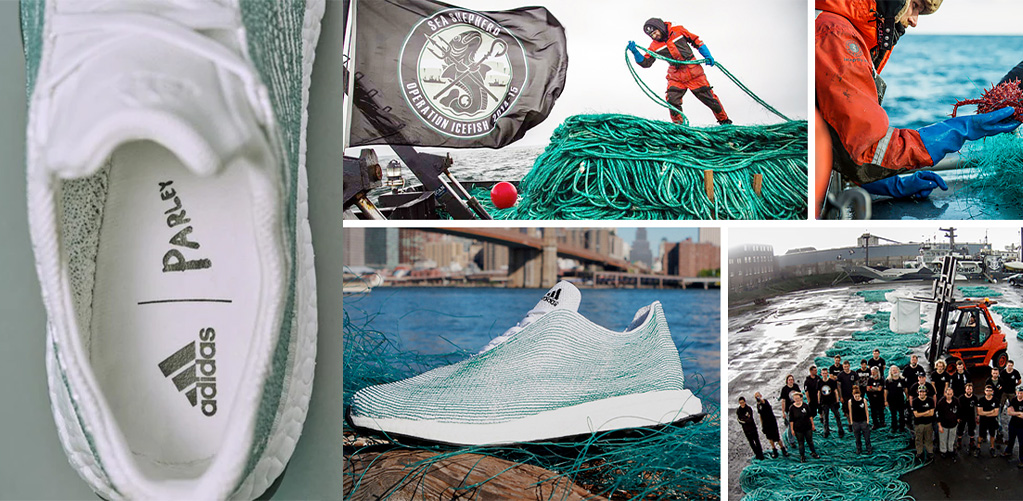
Recycled plastics can be clear, colored, glossy, or matte. They’re especially great for futuristic themes or high-energy brands that want to make a bold visual statement. At JD Institute, the Visual Merchandising syllabus encourages students to experiment with upcycled materials and sustainable prototyping, transforming waste into wow-worthy installations.
Cork is harvested without harming the tree, making it one of the most sustainable materials available. It’s lightweight, sound-absorbent, and has a natural, earthy look that makes it a favorite for display walls, counter panels, shelving, and plinth covers.
Famous Example: Nike’s House of Innovation store used cork for wall panels, reflecting their commitment to a lower-carbon footprint in both product and presentation.
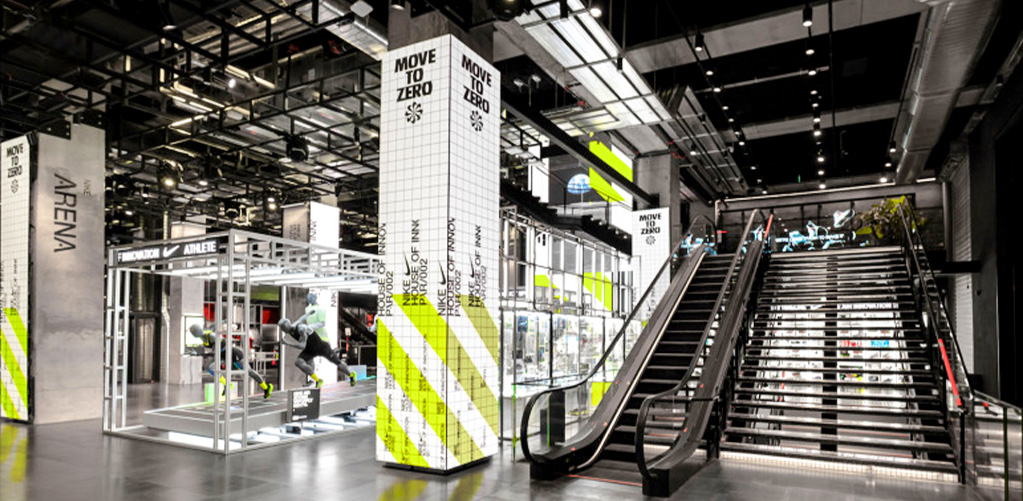
Cork adds a quiet luxury to the display and works perfectly for brands leaning towards eco-minimalism, earthy tones, or artisanal vibes.
Reclaimed wood adds rustic charm and history to visual displays. Taken from old barns, ships, or flooring, this wood is repurposed into display frames, signage, risers, or accent structures.
Famous Example: Patagonia is known for its environmentally responsible stores built using reclaimed wood to reflect their commitment to reuse and recycling.
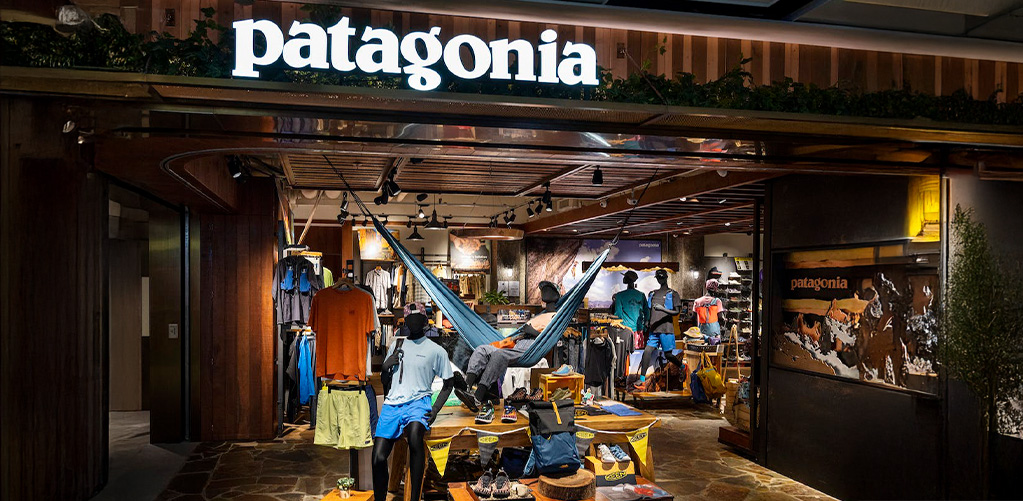
This material brings depth and character to storytelling zones within retail spaces and is a natural fit for ethical, vintage, or sustainable fashion brands.
Natural textiles like hemp and jute are strong, biodegradable, and give a handcrafted touch to visual setups. They’re used in backdrops, ropes, display wraps, and even handcrafted mannequins.
Famous Example: Lush Cosmetics incorporates jute ropes and handmade jute accessories in VM for their product tables and gift stations.
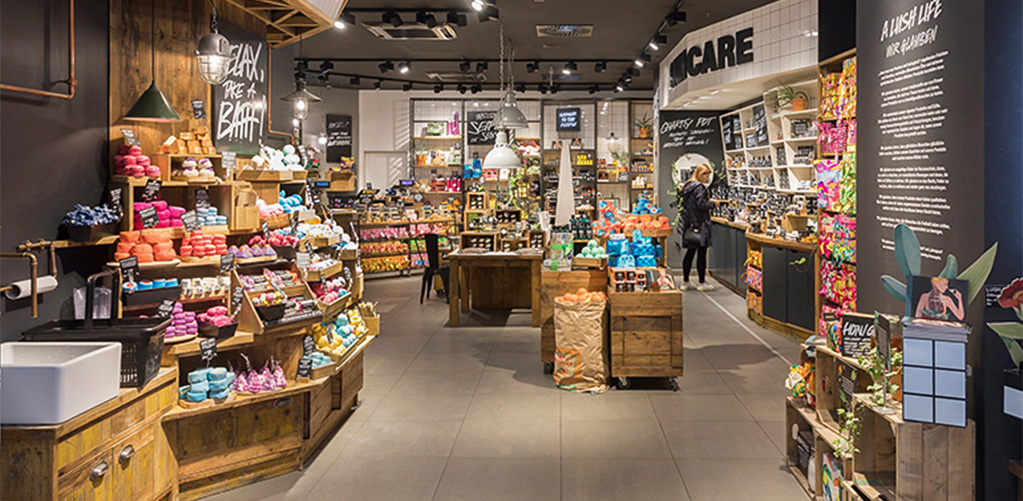
Because these materials are flexible and low-cost, they’re ideal for short-term campaigns or pop-ups. At JD Institute, students are made to learn and understand the versatility of such natural fibres and how to design for local sourcing and global impact.
The next time you walk past a store, pause and look closely. Behind the glam might be mushrooms, banana fibers, or recycled ocean waste. And behind those innovations? Designers who chose to learn differently.
If you’re someone who sees art in aisles and stories in setups, maybe it’s time to sharpen that eye with the right education.
Don’t just display differently—learn differently.
Your journey begins at JD Institute of Fashion Technology.